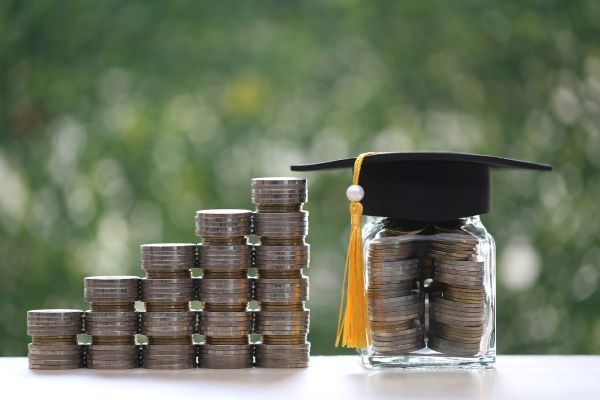While higher education is generally considered to be a driver of upward economic mobility, student debt is one of the biggest hurdles that prevents students from acquiring wealth. People of color experience the burden of student debt more acutely due to historic intergenerational wealth gaps, and IWPR research has shown that some student populations such as student parents are more likely to take out loans and struggle with student debt payments than others. Additionally, Black borrowers have higher student debt than borrowers of other races. IWPR reports also show that student mothers, who are the majority of student parents, experience more challenges with loan debt and financial instability than student fathers, likely due to gender-based disparities in occupations and wages. When considering the intersections of race, gender, ethnicity, and parenthood status, individuals who live at the crux of these identities experience the student debt crisis even more drastically.
Despite the crushing burden of debt on many individuals and families, after a three-year pause on student loan payments where federal student loan debt was fixed at 0% by the U.S. Department of Education’s Office of Federal Student Aid, student loans began to accrue interest again on September 1, 2023. Most borrowers will see their student loan interest rates revert to whatever they were before the COVID-19 pandemic payment pause began. Student loan payments for federal student loans have also resumed and many borrowers have received their first bills following the pause in late September and early October.
Following the Supreme Court’s strike down of President Biden’s student loan forgiveness program that provided debt relief for low and middle-income borrowers in June of 2023, President Biden announced that an additional $9 billion was allocated to debt relief on October 4. The debt relief will be administered through the Public Service Loan Forgiveness program to borrowers who have been in repayment for a minimum of 20 years, those who have previously qualified for relief but were missing out due to past administrative errors, and to borrowers who have a total or permanent disability through a data match with the Social Security Administration. On June 30, the Biden-Harris Administration also finalized the Saving on a Valuable Education (SAVE) plan. SAVE is an income-driven repayment plan that will cut borrowers’ monthly payments in half, allow some borrowers to make $0 monthly payments, and ensure borrowers don’t see their student loan balances grow from unpaid interest. The SAVE program is projected to save many borrowers at least $1,000 per year. All borrowers are eligible for enrollment in the SAVE plan.
At a recent “Student Debt Cancelation is Essential” panel hosted during the Congressional Black Caucus’s Annual Legislative Conference, Representative Ayanna Pressley spoke on the issue of student debt: “Education is the great equalizer, however, student debt pushes that further away.” the panel highlight that the student debt crisis is an issue that impacts almost all students and leads to substantial economic strain: roughly 60 percent of U.S. adults who have student loan debt have put off making important financial decisions such as saving money for retirement, getting married, having children, and buying a home. The amount of money reserved for student loan debt can have positive implications if redirected toward the economy if student debt is canceled.
Additionally, student debt cancellation would be an integral opportunity for individuals of historically marginalized backgrounds to invest in building generational wealth, a key to eliminating generational poverty. It is vital that the Biden-Harris administration invest and continue to push for the complete and total cancellation of student debt. The complete eradication of national student debt is a crucial component to flatten the mountains of inequality.


